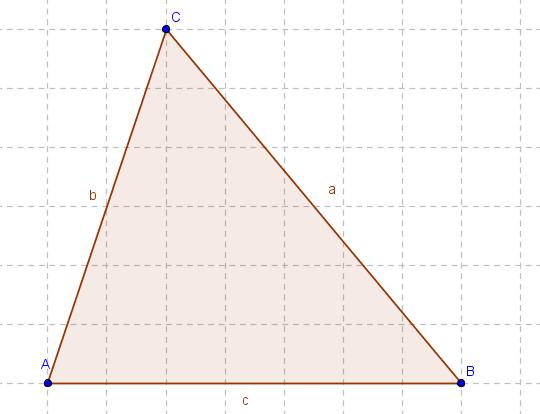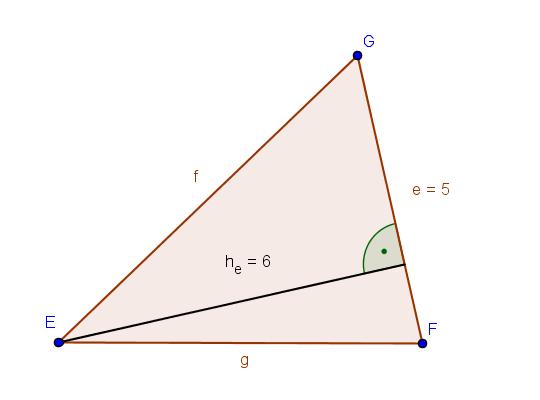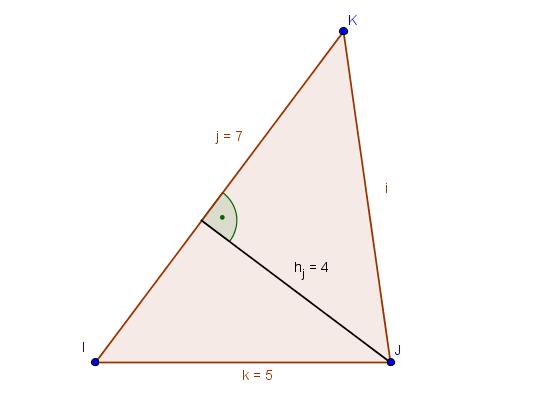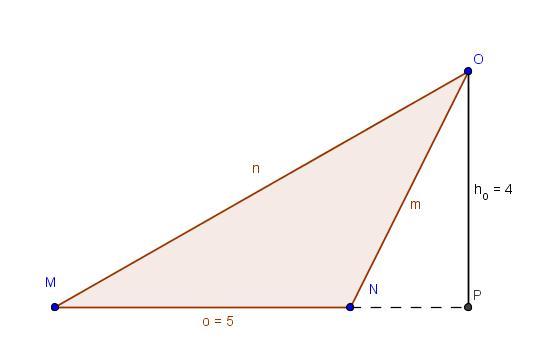Übungen: Unterschied zwischen den Versionen
Aus RMG-Wiki
| Zeile 3: | Zeile 3: | ||
*Berechne die Flächeninhalte der Dreiecke. | *Berechne die Flächeninhalte der Dreiecke. | ||
*Kontrolliere deine Ergebnisse mit den Ergebnissen auf der Seite. | *Kontrolliere deine Ergebnisse mit den Ergebnissen auf der Seite. | ||
| − | :Anmerkung: '''Allgemeine Flächenformel für das Dreieck: | + | :Anmerkung: '''Allgemeine Flächenformel für das Dreieck: (Grundlinie<math>\cdot</math>Höhe<sub>Grundlinie</sub>) : 2''' |
</div><br /> | </div><br /> | ||
| Zeile 14: | Zeile 14: | ||
| width="50%" style="vertical-align:top" | | | width="50%" style="vertical-align:top" | | ||
{{Lösung versteckt| | {{Lösung versteckt| | ||
| − | A<math>=</math> | + | <big>A<math>=</math>(c<math>\cdot</math>h<sub>c</sub>) : 2<math>=</math>(7 cm <math>\cdot</math>4 cm) : 2<math>=</math>14 cm²</big> |
}} | }} | ||
|} | |} | ||
| Zeile 28: | Zeile 28: | ||
| width="50%" style="vertical-align:top" | | | width="50%" style="vertical-align:top" | | ||
{{Lösung versteckt| | {{Lösung versteckt| | ||
| − | A<math>=</math> | + | <big>A<math>=</math>(e<math>\cdot</math>h<sub>e</sub>) : 2<math>=</math>(5 cm <math>\cdot</math>5 cm) : 2<math>=</math>15 cm²</big> |
}} | }} | ||
|} | |} | ||
| Zeile 42: | Zeile 42: | ||
| width="50%" style="vertical-align:top" | | | width="50%" style="vertical-align:top" | | ||
{{Lösung versteckt| | {{Lösung versteckt| | ||
| − | A<math>=</math> | + | <big>A<math>=</math>(j<math>\cdot</math>h<sub>j</sub>) : 2<math>=</math>(7 cm <math>\cdot</math>4 cm) : 2<math>=</math>14 cm²</big> |
}} | }} | ||
|} | |} | ||
| Zeile 56: | Zeile 56: | ||
| width="50%" style="vertical-align:top" | | | width="50%" style="vertical-align:top" | | ||
{{Lösung versteckt| | {{Lösung versteckt| | ||
| − | A<math>=</math> | + | <big>A<math>=</math>(o<math>\cdot</math>h<sub>o</sub>) : 2<math>=</math>(5 cm <math>\cdot</math>4 cm) : 2<math>=</math>10 cm²</big> |
}} | }} | ||
|}<br /> | |}<br /> | ||
Version vom 9. September 2010, 14:01 Uhr
Arbeitsauftrag:
- Berechne die Flächeninhalte der Dreiecke.
- Kontrolliere deine Ergebnisse mit den Ergebnissen auf der Seite.
- Anmerkung: Allgemeine Flächenformel für das Dreieck: (Grundlinie
 HöheGrundlinie) : 2
HöheGrundlinie) : 2
|
A |
|
A |
|
A |
|
A |
Hier kommst du zurück zum Inhaltsverzeichnis.

 (c
(c



